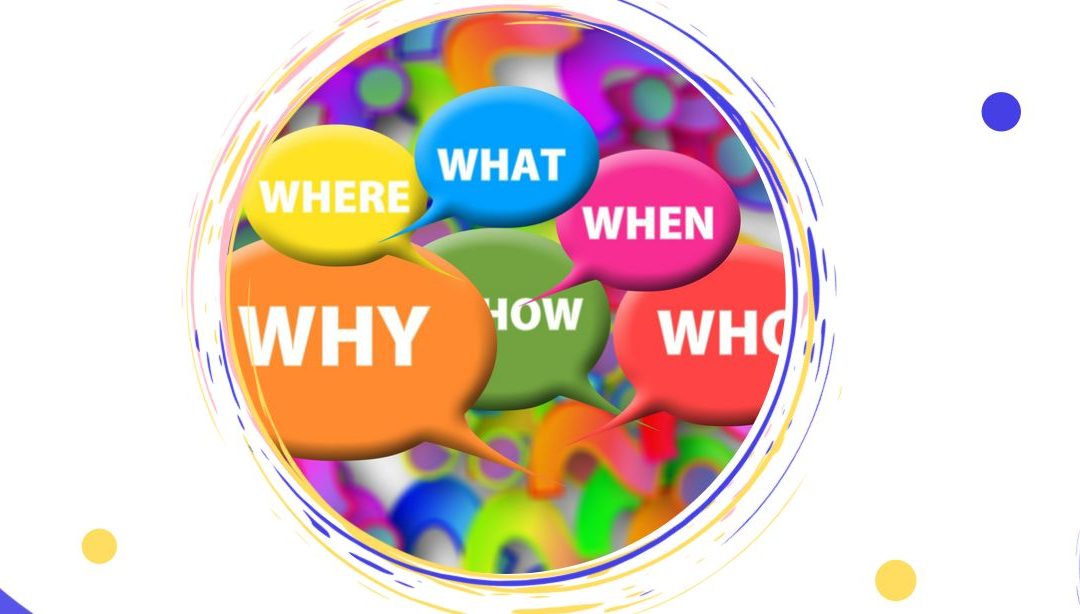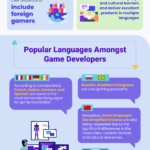Localizing your game is one of the main things you can do if you want to reach a global market, grow your revenue, and expand your player base. But even if at the first glance it seems to be an easy task, localization involves many aspects and comes with a certain risk.
Beyond the surface, things are much more complicated than they seem and involve the cooperation between linguists, editors, testers, developers, graphic designers, actors, marketers, and even a localization company. And to complicate things even more, you can also add stakeholders to the list. With so much pressure, you might ask: “Does it worth it? Or it’s better to use the original version of the game all over the world?”
When your game’s success and turnaround (ROI) depend on you, you would want to know that the investment of time and money was worth it.
In this blog post, we’ll cover a few aspects to think about before starting your game localization – from some basic aspects to the strategic, financial, and operational ones.
Basic Questions About Localizing Your Game
1. What does localizing mean?
In addition to simply translating the words from one language to another, localization means considering the elements specific to a market and adapting the content in a way that fits the requirements and it’s suitable to that market.
In other words, localizing games means:
- editing for cultural, historical, religious, and legal sensitivities
- replace the artwork to fit with the targeted market
- recording new voices
- transforming and adapting user interfaces
- create new user manuals
- develop new packaging and marketing communication
2. What is the localization workflow?
To have a successful localization, you need to go through the following steps:
- Preparing for localization – is the stage where you learn and analyze everything and prepare for what’s next – about your game and the targeted market: cultural, historic, religious, and economic elements, and taboos. You collect all these elements, create a localization project, and develop a strategy, that will act as a guide for everyone involved – linguists, developers, designers, marketers
- Translation – turns your game assets from one language to another
- Revisions and editing – corrects grammar, spelling, and stylistic errors, check translation consistency and ensures terminology is consistent
- Regional adaptation – makes sure the translated content complies with local regulations and standards
- Linguistic quality assurance (LQA) – tests the quality of the translation and how new elements integrate into the game.
3. How long it will take to localize my game?
There is no standard time to localize a game. The length of this process depends on the number of words that must be translated and the elements that must be adapted to the new market.
However, you have to know that any changes you add during your game localization, the more time this process will take.
4. Is bad localization risky?
Regardless of whether we are talking about a game or a different product, bad localization can be a true disaster. Get a wrong cultural reference or break some taboos and you can offend the entire community. If you make mistakes and violate any legal terms or standards, you can risk your game not being published on the market.
So yes, bad localization can be very risky and can break your entire game – both in terms of reputation and finances.
Strategic Considerations
5. Do I really need game localization?
Localization helps you to reach more potential ideal customers from your target audience. And the more audience you reach and convince to play, download, or buy your game, the higher your sales, revenue, reputation, and player base.
So yes, if you want to have a game that reaches a global market and maximize its success, you need to localize the content of your game.
6. Which localization languages should I choose?
When expanding into the major gaming markets, the translation and localization teams group the most important languages into two categories:
- EFIGS (English, French, Italian, German, and Spanish) – when you want to reach the USA, Latin America, Australia, and Europe
- CJK (Chinese, Japanese and Korean) – when you want to enter the Asian markets
These groupings act as a useful guide, but your ideal market depends on the nature and audience of your game.
7. How do I find the right market for my game?
Finding the best markets for your game can be a tricky and daunting task. But you can start by looking at data from similar games released in particular markets and make an idea about which game genres and styles are likely more or less to succeed in certain territories.
The starting points to consider are:
- the size of the market
- the success rate of your game genre in specific regions
- the most restrictive and the less restrictive countries
- the countries with the highest and lowest level of English
8. I want to localize my game in more languages. Should I start with all of them?
If you decided on the markets you want to enter, then doing all of it in one go can pay off.
Using one provider for all the localization languages will result in more consistent translations, as they use the same original sources, style guide, and reference information. In addition, if there is a bug in the translated versions of your game in one language, the team can cross-check and fix the errors that appear in all translated versions.
Besides, all future updates can be implemented very easily if you have only one provider.
9. Should the people who localize my video game be gamers?
Yes, absolutely. Hiring a localization team made by game players means they understand the importance of language used in a video game and they can easily implement the local terms and idioms. Besides, the more games they play, the better they know the importance of a positive user experience and they can improve your game.
Financial Questions
10. How much does the localization cost?

The cost of a localization project involves more aspects, such as volume of work, quality, delivery time, and the prices can vary according to the project’s complexity. However, there are a few types of fees to consider when estimating the budget of your game localization project:
- Familiarization, glossary creation, style guide creation, developing the testing plan, quality assurance, and project management: hourly prices
- Translation and revision: per-word rate.
11. Which are languages with the best price/audience ratio?
The size of your target market and the genre of your game should be the starting point of the revenue you get from your localized game. However, here are some costs and reach of some languages:
- Simplified Chinese – is relatively inexpensive and can open the door to a huge potential audience
- French – will help you to expand not only in France and Canada but also in all other countries that are former French colonies.
- Russian – the Russians have pretty low English levels, but they are a huge market. So, if you want to expand to the former Soviet Union countries, you should definitely localize your game. Luckily, localizing from English to Russian is very cheap.
- Spanish – is one of the five most widespread languages in the world and your video game localization can bring you important revenue.
12. How can I reduce the cost of my game and content localization?
There are two ways to reduce the costs of your localization project:
- Limit your changes. Even minor changes introduced after you start localizing your game will increase your costs.
- Be consistent.
13. Should I hire agencies or freelancers?
Generally speaking, freelancers can be cheaper than agencies. But agencies offer you a higher quality and a much larger variety of services and languages for translation and localization, such as quality assurance. But the best part is that agencies act as a single point of contact for all your needs related to the localization project – from graphic designers to actors for recording the voice-overs. This will reduce substantially the project management efforts on your end.

Operational Considerations Before Localizing Your Game
14. Which format should my content be in?
Using clearly formatted spreadsheets for handling your translation and localization project simplifies the import of information into the translation and localization software. That’s why the spreadsheets (and their tabs) must be all laid out using the same template or format.
However, the best formats are multilingual compatible. A perfect example is a .xliff. These are files designed to be multilingual and allow for contextual information, etc. to be included.
15. How much context should I give to the localization team?
The more context you can provide, the better. If you can give the localization team a full version of your game to play through, then do that. This way they will become familiar with and understand your game much easier. If not, provide them with as much information as you can about the tone, style, and background context of the game. This way you’ll help them to produce a higher-quality result.
16. When should I start thinking about localizing my game?
The sooner the better. If you start thinking from the beginning about which markets you want to expand, it saves a lot of technical issues later and you’ll avoid language and culture-specific issues, like noun/gender issues, special characters, and non-breaking spaces.
Thinking about localization early also sets you up to complete the project on your timeline, rather than force out a lower-quality rushed job at the end of development.
17. Subtitle or voice-over when localizing your game?
This depends on the style of your game and the preferences of your audience. If your game is an online first-person shooter without a story, often there’s no real need to translate the game’s audio. But if it’s a story that relies on dialogue, the improvement to a player’s experience that audio translation adds is worth the investment.
18. What is Localization Quality Assurance (LQA)?
LQA is the last step in making sure of having a high-quality localization. Basically, LQA means:
- linguistic testing checks the accuracy and consistency of the translation within context, flags missing content, and correctly formats things like times and dates
- cosmetic testing checks the consistency of the source material and whether images and graphics are localized correctly
- cultural testing makes sure the game’s material passes the target region’s content laws
- certification testing checks the game will pass hardware manufacturer certifications.
19. What’s an indicator of a good LQA?
One of the best ways to analyze LQA standards is through submission rates. Submissions are all the checks and balances you need to tick off before a hardware manufacturer will accept a game — for example, a controller disconnect message needs to display the right terminology at the right time. If a submission rate is in the 95-100% range, you’re probably in good hands.
20. How do I make the difference between a good translation service and a bad one?
There’s no certain way to know you’ll get a high-quality translation. But there are some things you should ask from a provider before hiring them:
- check the credentials of the company
- ask for critical user feedback
- look for native speakers
- look for real knowledge of the subject
- ask for an explanation of why they would translate in a certain way
- check a provider has experience working with string files and files that contain tags and code.
Any questions for us?
Because we are the translation and localization experts during the projects we’ve partnered with, we have seen and experienced a lot.
Therefore, if you are looking for answers before localizing your game, we are here to help. Let’s talk!






